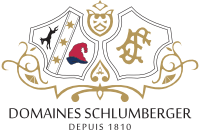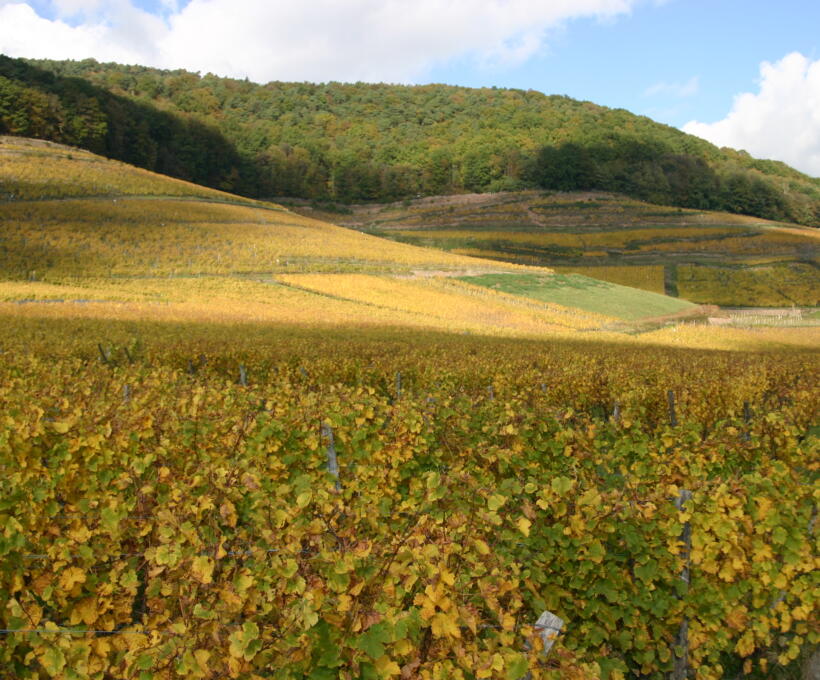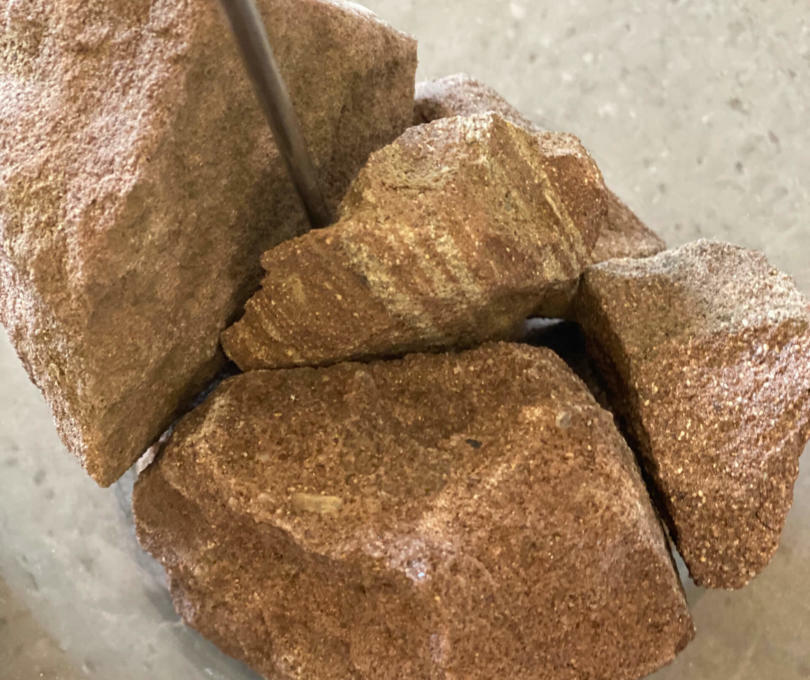The Nature
Kessler Grand Cru is shaped like a basin (this is what Kessler means) sheltered from the cold winds which blow along the Guebwiller valley.Here the dry stones form an unmistakeable tie between the neighbouring Grands Crus of Saering, Spiegel and Kitterlé. The blend of sand with heavier scree and its steep slope stimulate the production of wines full of character.
Location
Kessler Grand Cru is located on the municipality of Guebwiller on the east slope of theUnterlinger hill, at an altitude varying between 300 and 390 metres. Its parcels face south-east and touch the Kitterlé Grand Cru on its upper part and the Saering and Spiegel Grands Crus on its lower part. The cru parcels are delimited by a group of walls in dry stone with some dating back to over two centuries.
Soil
Kessler mainly sits on a sandstone substrate from the Buntsandstein Vosges area. Its erosion over time has produced red-like soils mixed with sand and clay along with rather abundant mineral deposits. At its base there is a linear outcrop of Muschelkalk limestone, covered by sandstone colluvium which gives rather clayey, compact and erythemal soils which in no way modifies the homogeneity of this lieu-dit. This light soil has a low useful water supply but nonetheless provides the vineyards a sufficient and regular amount thanks to an incredibly deep root-growing system.
Microclimate
The name Kessler, literally translated by «cauldron» evokes the general layout of this basin-shaped Grand Cru. The valley centre is listed on the land registry under the name ofHeisse Wanne(warm tank) and forms a genuine heat regulator. In parallel to the Vosges mountain barrier which isolates it from west winds, Wanne protects the terroir from cold winds from the north and from the Guebwiller valley, guaranteeing a consistent grape-ripening rhythm. The rather high altitude of this terroir protects it from morning mists during the late fall season. The ripening process therefore occurs in a fairly slow manner which is perfect for the harvest quality. Moreover, the appearance of noble rot is limited in low-yielding vines. But if the weather is favourable in October than it can happen that noble rot appears.
The people
This Grand Cru was already known by the monks at the Murbach abbey, one of the most influential during the Holy Roman Empire. The Murbach abbey was one of the most influential during the Holy Roman Empire. To the extent that in 1228, the emperor Frederick II of Hohenstaufen bestowed the title of prince-abbot upon all the Murbach priests, making the abbey possessions an Empire princedom.
Heritage transmission
During the 12th century, wine-making made Guebwiller one of the most important towns in Alsace. Spurred on the Princes-Abbots of Murbach, the Wanne crus (presently Kessler Grand Cru), from Saering and Kitterlé were sent through Basel and Luzern heading to Austria. In 1575, the humanist writer Sébastien Munster spoke of Guebwiller in these terms: “This town sitting at the mountains’ mouth is full of vineyards and the Murbach abbot often comes here to stay.” Cosmographia Universalis.
A saying from the 16th century affirms that: “In the Rangen of Thann, the Wanne of Guebwiller and the Brand of Turckheim, the best wine in the country is produced.” This testimonial of popular wisdom marks the recognition of the unquestionable grandeur of Wanne wines. Their reputation was such that unscrupulous traders delivered wines to the Swiss claiming it was Guebwiller wine.
During the 17th century, to foil these traffickers, the Guebwiller inhabitants decided to place a certificate of origin on each wine barrel which left their cellars. As witnessed by a missive sent from Guebwiller to the town of Luzern on April 15, 1667: “We decided to write to these people in Luzern as we learned that some buyers are tempted to take wines from Rouffach, Westhalten and Soultzmatt to then sell them as Guebwiller wines so to inform you that from now on these wines will be accompanied by a Ladtzettel (or certificate of origin).” They therefore became precursors of Appellations d’Origine Contrôlée (Protected Designation of Origin).
So it was only normal that Kessler was part of the first selection of listed terroirs in 1975.
Text from CIVA website vinalsace.com








